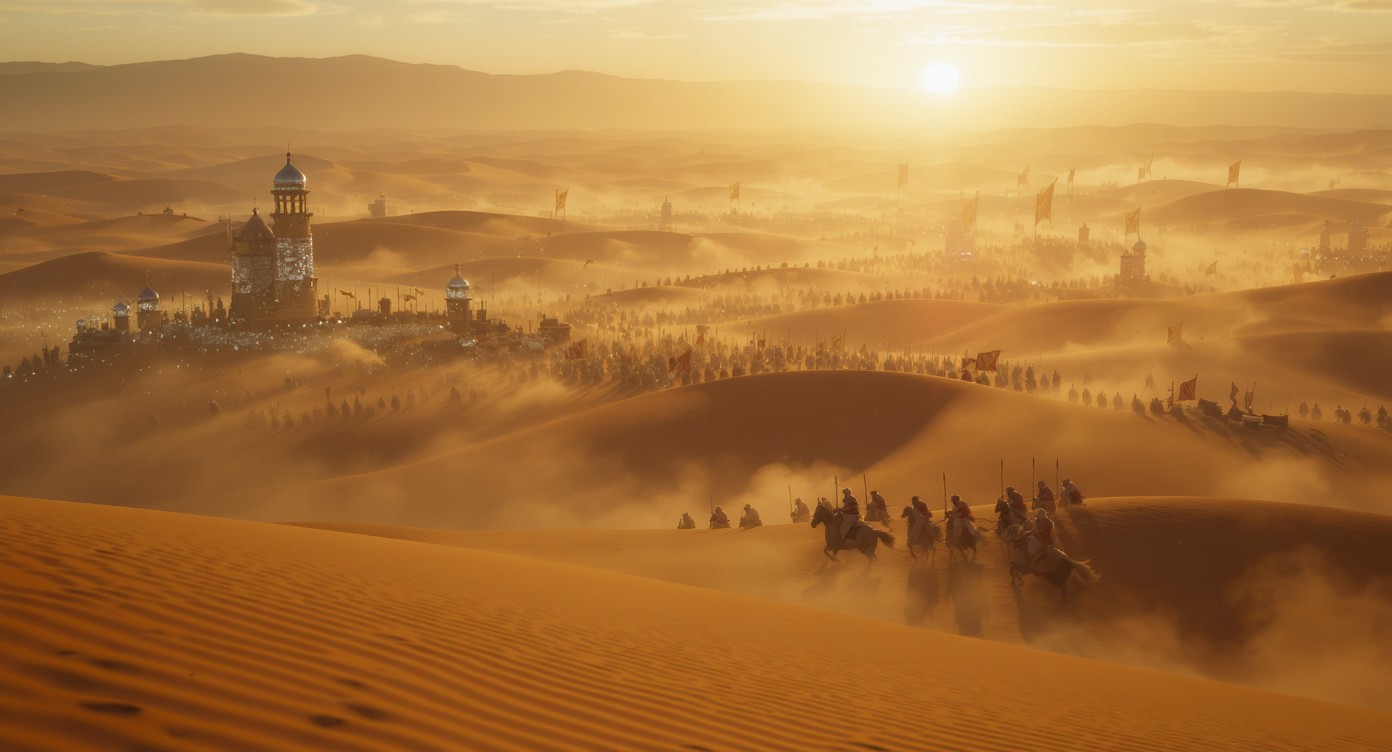The Stone Fox of Badezos

Across the southern reaches where the rivers die and the wind carries voices older than kingdoms lies Badezos, the Court of Stone and Memory. It is a realm carved from patience — a kingdom that endures not through conquest, but through cunning and thirst. Its rulers are called the Sunsworn, crowned beneath veils of woven glass and wrapped in linen soaked with the dew of dawn. They are Ida by blood, but shaped by a noble temperament: fierce, deliberate, and reflective like the heat-haze that guards their northern borders.
Badezos stands south of the shifting dunes of Qantherara and west of the mighty Duk kingdom of Thrukal. To its west stretch the northern tips of the great woodlands that shelter Tyssanos and the Alfra lands beyond. It is a crossroads realm — where caravans pause between mountain and forest, and where every grain of sand remembers the footsteps of merchants and kings alike.
The Reign of King Seral Alen-Dai
During the mid-Second Age, King Seral Alen-Dai ruled from the Palace of Mirrors — a citadel whose walls were polished smooth enough to throw sunlight across the entire basin at dawn. He was called the Stone Fox by his enemies, for he fought no battle directly yet won them all. His crown was not of gold but of etched glass, each panel cut from the mirrored walls of his ancestors’ tombs. They say that when he entered council, he wore the crown backward so that his advisers could see themselves before they spoke.
In those days, Badezos had little iron and less mercy. So he built his throne upon trade, which filled his coffers and made him powerful. The lands to the north were rife with bandits, while to the south the woodland realms offered no guarantee of safe passage. His kingdom became a chokepoint for goods moving west to east, and despite repeated attempts by neighboring powers to invade, Seral avoided war throughout his reign. He ruled as merchants do — through leverage, promise, and patience.
The Glass War
Peace in the Waste is never silent. The rival kingdom of Tyssanos coveted the trade routes that ran under the king's careful watch. When their riders crossed the border at dusk, the mirrored beacons atop the Palace of Mirrors flashed to life — thousands of small reflections signaling every caravan, every outpost, every hidden watchtower. Seral’s armies moved not by drum but by light. The Tyssan host, seeing the trade routes alight in all directions, believed itself surrounded. In truth, there were fewer than three hundred of the renowned Guard of the Stone Fox in the field, but they struck from the hills with precision and elusiveness. The hit and run battles lasted until the second sunrise; by noon the Tyssan banners lay charred upon the sand.
The Court of Sand and Memory
In his final years, King Seral turned his gaze inward. He commissioned the Hall of Remembered Steps, a corridor paved with glass panels, each engraved with the footprints of those who had fallen in his service. At sunset the panels glow amber, as if the dead walk once more beside the living. It is said that any lie spoken within the hall freezes the breath of the speaker — for reflection tolerates no deceit.
When Seral died, he was interred beneath the fountain that first gave the court its dew. His glass crown was shattered and scattered into the basin, so that no single successor could claim it whole. Each monarch since bears only a fragment, polished smooth by sand, to remind them that no ruler owns the desert entirely.
Bards of the caravans still sing his refrain when the wind grows too quiet:
“The stone keeps what speech forgets,
The sun remembers all its debts.
Where glass and memory intertwine,
The Sand Court stands, unbroken, fine.”

